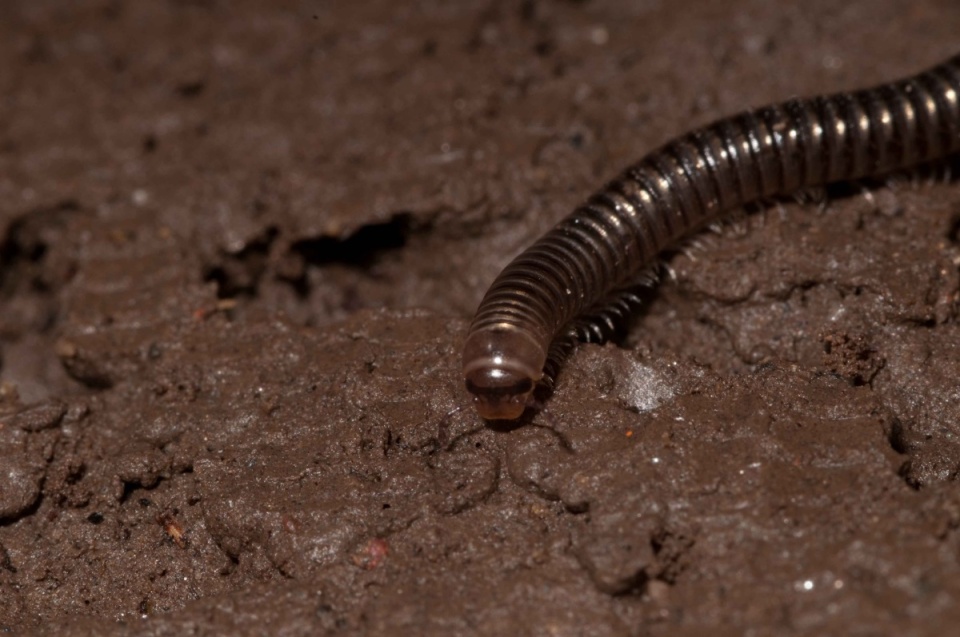Millipede
Millipedes are arthropods that have two pairs of legs per segment (except for the first segment behind the head which does not have any appendages at all, and the next few which only have one pair of legs). Each segment that has two pairs of legs is a result of two single segments fused together as one. Most millipedes have very elongated cylindrical bodies, although some are flattened dorso-ventrally, while pill millipedes are shorter and can roll into a ball, like a pillbug.
The name "millipede" is a compound word formed from the Latin roots milli ("thousand") and ped ("foot"). Despite their name, millipedes do not have 1,000 legs, although the rare species Illacme plenipes has up to 750.[2] Common species have between 36 and 400 legs. The class contains around 10,000 species in 13 orders and 115 families. The giant African millipede (Archispirostreptus gigas), known as shongololos, is the largest species of millipede.
Millipedes are detritivores and slow moving. Most millipedes eat decaying leaves and other dead plant matter, moisturising the food with secretions and then scraping it in with the jaws. However, they can also be a minor garden pest, especially in greenhouses where they can cause severe damage to emergent seedlings. Signs of millipede damage include the stripping of the outer layers of a young plant stem and irregular damage to leaves and plant apices.
Millipedes can be easily distinguished from the somewhat similar and related centipedes (Class Chilopoda), which move rapidly, and have a single pair of legs for each body segment. However, unlike centipedes, millipedes are by nature not predators, and due to their slow, non-aggressive behaviour and simple diet of decomposing leaves, are easy to keep and ideal as pets.
- 0
- 0
- Nikon D300
- f/13.0
- 105mm
- 100

Comments
Sign in or get an account to comment.


